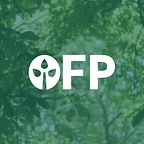Forestation 2.0
The forestation community, much like the ecosystems they maintain, is sustained through the careful alignment of members occupying different niches. Corporations are interested in offsetting their carbon to meet regulatory requirements, as well as displaying corporate social responsibility to their customer base. Meanwhile, governments are responding to increasing anxiety about the climate crisis with ambitious tree-planting commitments at local, national, and global levels. Investors hoping to cash in on novel carbon markets are investing heavily in forest projects, who in turn stay afloat by proving the success of their tree planting operations. All the while, entrepreneurs, technology providers, and local communities are recognizing that their interests are aligned with those of the world’s forests.
At present, the ecosystem looks more like a tangle of individual and disconnected strands than an interconnected web with a common direction. Investors struggle to identify legitimate forestation projects, project funding mechanisms are inflexible, and the carbon credit market is a mess of siloed certification bodies with nonstandard methodologies. The industry is inhibited by countless inefficiencies borne out of industry-wide incohesion.
The Open Forest Protocol recognizes that forests have the potential to reverse the current spiral towards catastrophic climate change. For businesses looking to grow alongisde the forest economy, unnecessary inefficiencies will not do. OFP aligns the incentives of stakeholders in the world’s first global, digitized forestation platform for handling monitoring, reporting and verification needs — at scale, and in an open-source and inclusive manner.
Project Operators
The OFP model can accommodate any project that sequesters carbon, whether that be via conservation, reforestation, agroforestry, or otherwise. Project operators are a unique bunch, but they are united by an important incentive: when you’re trying to grow trees, you need money to do that. By utilizing OFP’s standardized MRV system, project operators can certify the veracity of their efforts so as to improve trust with investors.
Validators
Validators are technology companies specializing in environmental monitoring. Like project operators, validators are a diverse group. Some validators run satellite companies that provide GIS data of forest growth. Some validators operate drones, who can fly over and evaluate whether the data upload matches the situation on the ground. Importantly, local people can act as validators, since they are able to provide on-the-ground reports of forest growth in a particular project area.
Project operators pay a small fee when they upload forest data to the protocol, which goes to the decentralized group of validators for a vote on the veracity of the data upload. Validators make this decision on the basis of historical data uploads from each project and any additional monitoring their organization can provide. The data upload fee is ultimately rewarded to the validators who support the consensus decision. The following infographic outlines the validation process further.
However, during this time period any other validator can challenge the legitimacy of the data upload by following the same process, and if successful, receives the data upload fee instead. This is the essence of the mechanism: data is certified by validators who have an incentive to correctly discern between real and faulty data.
Entrepreneurs can integrate their business model with the OFP. In the past, tree-planting entrepreneurs have had to either carry out their forestation projects themselves, or identify one of many tree planting organizations to do their forestation for them, both of which are expensive and hard to monitor. OFP modernizes the entrepreneurial side of forestation by aligning the value chains of project operators with entrepreneurs. Entrepreneurs can integrate in one of three ways: 1.) they can build DApps that function alongside OFP’s open-source data, 2.) they can act as investors, sending money to forest projects in exchange for verified reports on trees planted, or 3.) they can create novel business models surrounding any aspect of the OFP value chain, such as land tenure or carbon trading.
Forestation is one of a select few industries with the future of civilization resting on its success. OFP strikes an efficient balance between competition and collaboration. It is a regular competitive ecosystem in that the projects and services succeed based on merit. However, it is foremost a collaborative protocol, since it standardizes and optimizes the activities of each stakeholder for maximum ecosystem outputs. Forestation must smooth out its inefficiencies if humanity is to avoid catastrophic climate change, and OFP is going to facilitate this transition.
